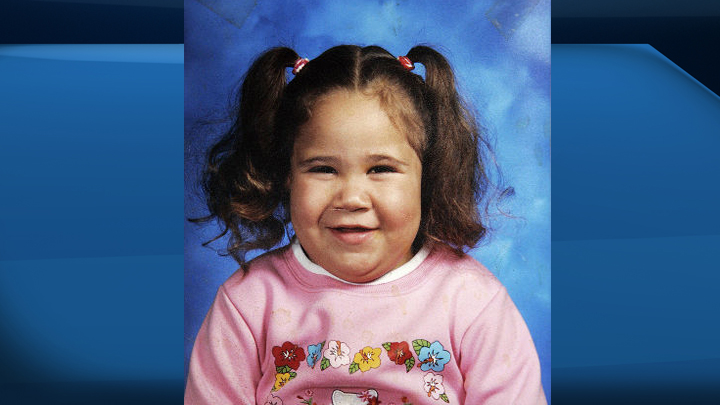TORONTO — A former child welfare worker told a coroner’s inquest Thursday that he was concerned the guardians of a seven-year-old Toronto girl might pose a risk to children in their care.

Hamid Jivraj, then an intake worker at the Children’s Aid Society of Toronto, noted his concerns after looking into calls made about Katelynn Sampson before the girl’s case was referred to a sister agency months before her death, the inquest heard.
Katelynn’s mother, Bernice Sampson, was addicted to crack and gave her daughter to Donna Irving and Warren Johnson in the spring of 2007 in a misguided attempt to give the girl a better life. The pair was granted legal custody the following year despite having several criminal convictions.
READ MORE: Children’s Aid Society expected to testify today at Katelynn Sampson inquest
The arrangements remained murky for some time, however, and in December 2007, Katelynn’s school called the Children’s Aid Society in to clarify whether Sampson should be allowed to pick up her daughter.
An initial screening noted that both Sampson and Irving had a history with child welfare agencies, and that they had struck a private agreement over caring for Katelynn. But the matter was deemed a custody issue with no threat to the child and the file was closed, Jivraj said.
School administrators called about a similar issue on Feb. 4, 2008, and a records check found allegations of sexual abuse against Johnson, though Jivraj said he was unable to verify them. Police told the agency no such charges had been laid, but listed Johnson’s convictions for assault and other crimes, he said.
Since Johnson lived with Irving, Jivraj’s report on the call noted “there may be risk to the children,” the inquest heard. Irving, meanwhile, was deemed a moderately high risk, since two of her children had previously become wards of the Crown.
READ MORE: Police domestic incidents should be part of Katelynn Sampson inquest: motion
Because of Irving’s aboriginal heritage, the case was then transferred to Native Child and Family Services. Jivraj said the second agency would have taken CAS’s assessment into consideration but has its own process for dealing with referrals.
The inquest previously heard that another call about Katelynn had come in January, but the agency lost track of the record and it was never addressed.
And on Feb. 11, another sister agency, the Catholic Children’s Aid Society, contacted CAS after a neighbour called to report that Irving and Johnson were using drugs. The information was faxed to Jivraj, but he testified that he had never received it.
The sharing of information between Toronto’s four overlapping child welfare agencies has been a focus of the inquest, which began last week.
The Children’s Aid Society scrutinized and overhauled its practices after Katelynn’s death, the inquest has heard. A key part of those reforms was the creation of a uniform referral system shared by all four agencies, which tracks whether referrals have been received.
READ MORE: Inquest hears Katelynn Sampson was struck so hard her liver ruptured: pathologist
Jivraj, who now works for the Peel District School Board, was asked under cross-examination why he never met with Katelynn or her mother or sought to confirm the information given to him by Irving, aside from talking with school officials.
Nor did he question how Katelynn came to live with the couple, even after learning of Irving’s history with child welfare agencies.
“I was relying on the fact that Katelynn was visible in the school … and there was no concern articulated to me from the school” about the care she received from Irving, he said.
Sampson’s lawyer, Suzan Fraser, argued that had he met with her client, he could have raised concerns about Irving and discussed alternate arrangements for Katelynn.
Katelynn was found dead in Irving and Johnson’s apartment on Aug. 3, 2008. She was covered in bruises and lacerations, some dating back months, and an autopsy showed she died of septic shock stemming from her injuries.
The couple pleaded guilty three years ago to second-degree murder in Katelynn’s death and were sentenced to life in prison with no chance of parole for 15 years.


Comments